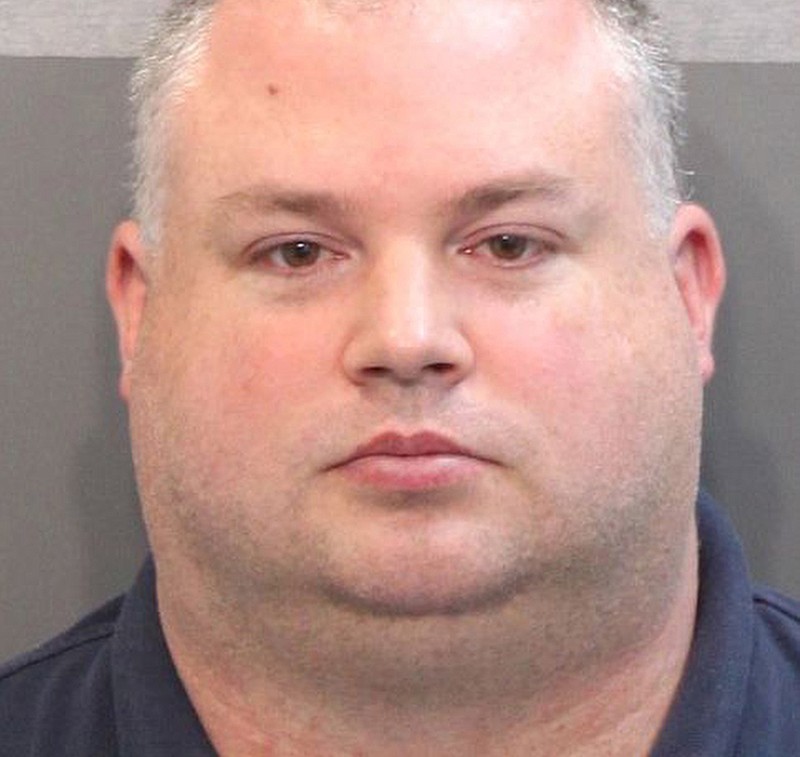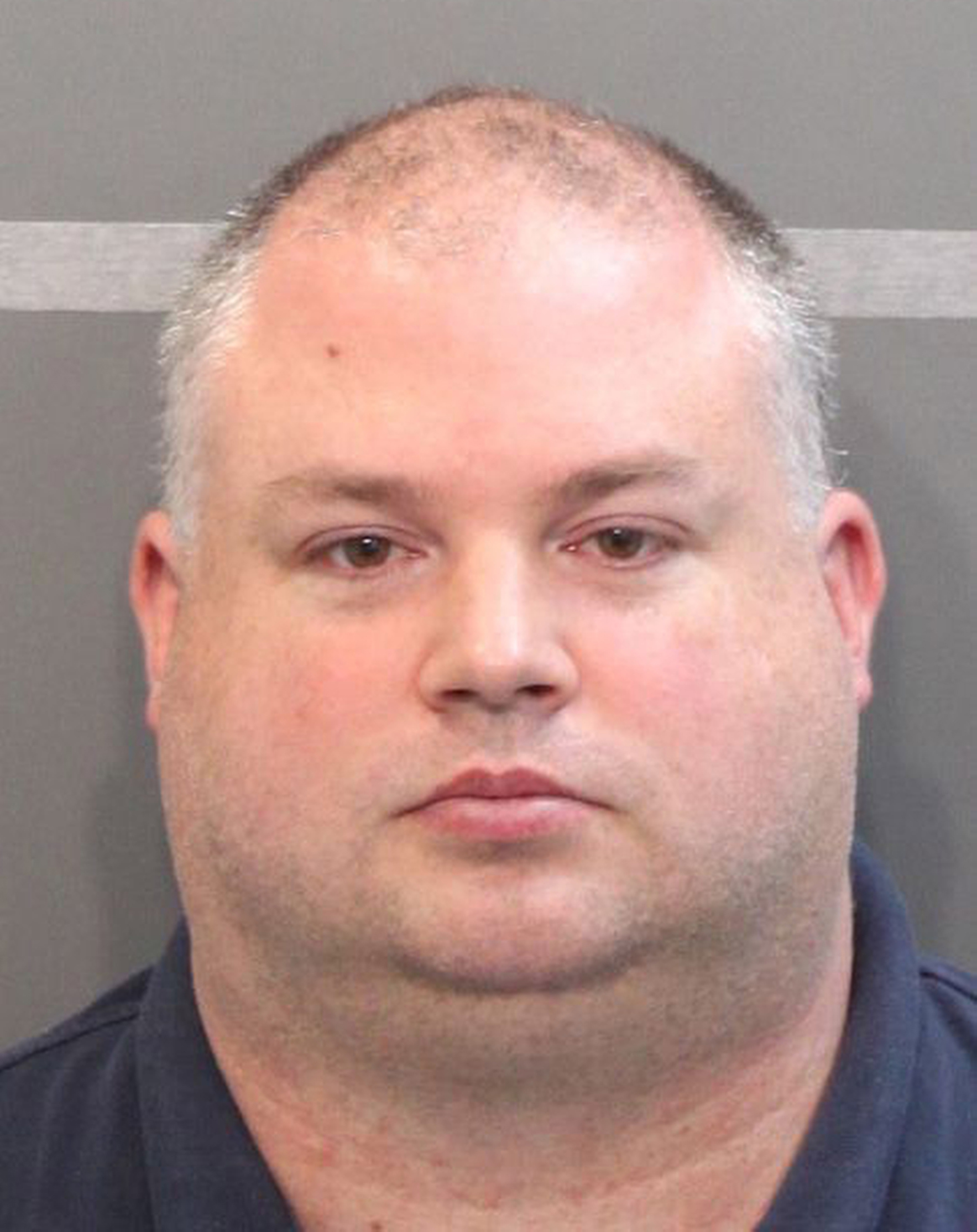A former Red Bank police officer accused of using excessive force in the arrest of a Latino man could walk free after a "hopelessly deadlocked" jury led to a mistrial Friday.
Hamilton County jurors unanimously agreed to acquit Mark Kaylor of aggravated assault, one of three charges he faced after the violent April 2014 arrest of 26-year-old Candido Medina-Resendiz. What they couldn't decide was whether to convict Kaylor, 40, of a lesser charge - in this case, reckless aggravated assault. Beginning Thursday afternoon, jurors spent 11 hours in disagreement, they told Criminal Court Judge Tom Greenholtz.
"Does every member of the jury agree that further deliberations would not be productive?" Greenholtz asked jurors around 2 p.m. Friday.
Every hand went up.
And then, to avoid wasting further resources or risk coercing somebody into a verdict, Greenholtz declared a mistrial.
"We respect the work of the jury," Kaylor's attorney, Lee Davis, said afterward. "They worked for two days on trying to reach a verdict. And we appreciate a 'not guilty' acquittal on the aggravated assault charge."
Throughout Kaylor's trial, which started Tuesday, prosecutors said Kaylor was excessive when he rushed into a struggle between Medina-Resendiz and Red Bank police officers. He could have resorted to less-violent measures to subdue Medina-Resendiz, who was drunk, partly handcuffed, and didn't speak much English.
"He knew how to do it right," prosecutor Kevin Brown said earlier this week as he held up Kaylor's graduation plaque from the Cleveland State Law Enforcement Training Academy in 2010.
Kaylor punched Medina-Resendiz seven times about the face and shoulders, Brown and prosecutor Andrew Coyle said. The 26-year-old needed surgery to fix his fractured eye socket, including a titanium plate for support, they added.
Davis, meanwhile, emphasized that Medina-Resendiz had been arrested on at least four other occasions and knew how to act during an encounter with police; that he was drunk and appeared to bite at officers; that prosecutors were applying 20/20 hindsight to three seconds of difficult decision making; and that other officers used more force than Kaylor, including stun guns and batons.
Technically, Kaylor's case is still pending. Prosecutors, who declined to comment afterward, could pursue a few avenues when they revisit the case Nov. 9 in Hamilton County Criminal Court.
First, they could push to retry what's left of count one and two of Kaylor's indictment. Kaylor officially faced charges of aggravated assault, reckless endangerment, and official misconduct after District Attorney General Neal Pinkston secured his indictment in March 2015. Shortly thereafter, Kaylor resigned from the department.
Earlier this week, prosecutors had to dismiss the reckless endangerment charge, Greenholtz said in court. But even though jurors acquitted Kaylor of aggravated assault, a lesser charge, "reckless" aggravated assault, remains on the table. On Friday, jurors said they couldn't agree on a verdict for the official misconduct charge. So that's an option, too.
If they choose to retry Kaylor, prosecutors could do it in Hamilton County. But in court Friday, Davis said attorneys probably need to address the issue of media coverage come Nov. 9. It's not unusual for defense attorneys to request jurors from a different county if a case attracts enormous attention. The rationale: To find people who haven't read or heard much about the defendant.
There is another option: Prosecutors could dismiss the case altogether, for any number of reasons. They already brought a case and jurors couldn't unanimously agree, so they may not wish to expend any more resources.
Aggravated assault is a felony that carries three to six years in prison, Davis said earlier this week. Official misconduct is a misdemeanor with a sentence of 11 months and 29 days.
But any possible sentencing depends on a number of factors, including a person's community ties, their remorsefulness, and largely, their prior criminal record. Before this arrest, Kaylor had no other charges in Hamilton County Sessions Court and Criminal Court, records show.
On Friday, jurors said they didn't want to discuss their deliberations. Some cited the pending case. Others seemed exhausted after nearly half a day of scrutinizing the case among themselves. But on the way down the stairs, one juror turned to another, his pointer finger raised.
"It came down to one person," he said.
Previous story:
Hamilton County jurors still haven't decided whether a former Red Bank police officer is guilty of excessive force about 12 hours into deliberation.
For about six hours today, they have been considering Mark Kaylor's charges of aggravated assault and official misconduct.
Jurors started working Thursday morning but told Judge Tom Greenholtz around 5 p.m. they were hung on a verdict. They went home for the evening and came back today at 8:30 a.m.
Kaylor's attorney, Lee Davis, said jurors have a note they want to share with Judge Tom Greenholtz.
That doesn't mean they've reached a unanimous decision. If jurors remain hung, Greenholtz could declare a mistrial. If that happened, prosecutors could bring the case back to court.
For three days, jurors listened to prosecutors square off against Davis. Ultimately, the most important elements of the case boiled down to April 13, 2014 dash camera footage showing Kaylor punching Candido Medina-Resendiz seven times about the face and shoulders.
Prosecutors said Kaylor's behavior was excessive, and that he could have used less-violent arrest techniques when he rushed into a struggle between Medina-Resendiz, 26, and two other Red Bank back-up officers.
Davis, meanwhile, asked jurors to remember the context of the events, arguing that prosecutors were applying 20/20 hindsight to three seconds of a difficult situation in which officers faced potential threats.
Kaylor pulled Medina-Resendiz's car over that night around 3 a.m. for drunk driving along Dayton Boulevard. During the stop, the officer conducted a field sobriety test on Medina-Resendiz's friend, whom he had asked to drive because he was too drunk.
When Medina-Resendiz started resisting, other back-up officers applied more powerful uses of force, including stun guns and batons, Davis said. Not Kaylor, however, who only used his fists when he realized nothing else was working, he added.


